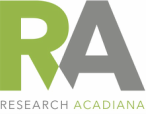Research Acadiana takes a customized approach to provide clear and actionable results to its clients. We offer a range of simple yet effective solutions to meet clients' individual needs and unique objectives. We specialize in competitive/comparative analysis, voice-of-the-customer research, satisfaction assessment, program and service evaluation, needs assessment, and employee engagement. Expertise includes recruitment, survey design, focus groups, in-depth interviews, data analysis, and reporting. Our analyses and deliverables are carefully crafted to tell a story from start to finish
What is QUALITATIVE research?Qualitative Research, or "word-data," is an empirical and exploratory approach. It can investigate the 'Why?' and 'How?' of human behavior and helps to assess attitudes, opinions, feelings, and beliefs that drive human behavior. It is often used to identify a problem and/or develop an approach to solve the problem. It enables researchers to probe further into areas of interest as they arise and collect specific information as needed, in an iterative process. Therefore, smaller and more focused population sample sizes may be favored with this approach. Qualitative researchers typically ask respondents broad, open-ended questions and then analyze their responses by identifying patterns and themes unique to that population.
Data collection methods commonly used in qualitative research include in-depth interviews, focus groups, field observations, and bulletin boards. |
What is QUANTITATIVE research?Quantitative Research, or "numbers-data," relies on numerical data and statistical analysis. It measures the problem and reveals patterns and relationships in a subset of data that may be projected onto a larger population. In this approach, researchers can often collect more data from more people at one time, compared to qualitative research. Therefore, larger and more general sample sizes are used. Quantitative research tends to ask more specific questions, collect numerical data from respondents, and analyze the data with the help of calculations and statistical analyses.
The most commonly used method for quantitative data collection is to develop a survey (aka "questionnaire" or "instrument") to distribute to respondents. They may be administered online, by paper, or by phone. |
